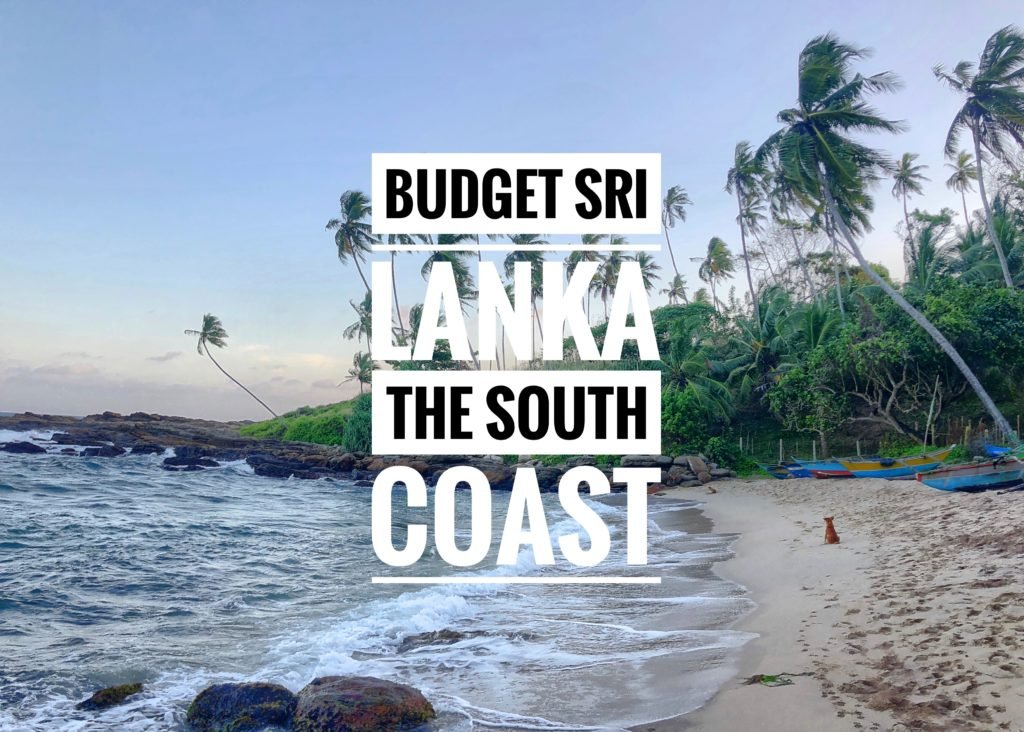
Heading south from Ella, we were a bit overwhelmed by the choices for spotting wildlife in Sri Lanka’s national parks. Yala had the leopards and elephants, but was also the most popular and potentially overcrowded. Plus, we’d heard the guides aggressively chase down the wildlife in the 4x4s once they’ve been spotted. Udawalawe seemed very elephant focused (an animal that we’d already had lots of encounters with in Thailand and Tanzania previously). And Bundala, which was a protected marshland on the coast that was prime migratory and native bird habitat, as well as having crocs, monkeys and elephants (all being particularly active in December, we read and heard). Bundala also had a distinction of being more “off-the-beaten path” as well. That last point clinched it for us… so we opted to go to Bundala for a chance to see some different, more aquatic, flora and fauna and to get away from the masses.
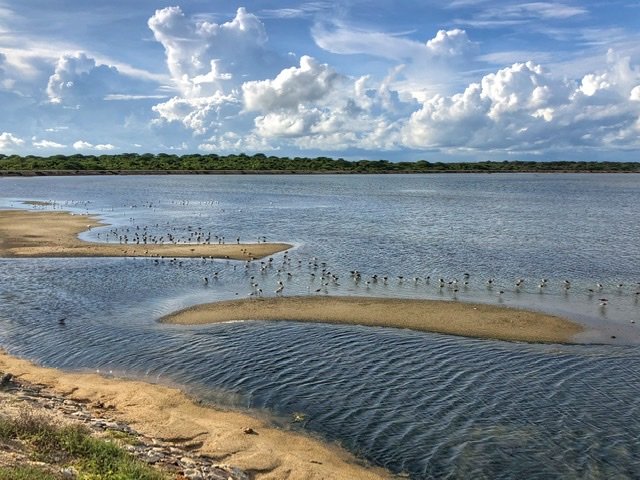
Bundala National Park
Although a guided Jeep Safari through Bundala is not nearly as pricey as an African safari, it still was a bit of a budget stretcher for us at $35/person. However, for that price we also got a private tour (just us and the guide) and absolutely escaped any crowds. In fact, in our solitude in Bundala some of our favorite moments where when the guide stopped and shut off the Jeep and the blissfully raw sounds of the marshland totally enveloped us. In the end though we were a bit disappointed because no elephants decided to come out to play that day. But, we still saw a unique and gorgeous landscape and added a few new animals to our “seen” list, but next time we think we’d run with the crowds in Yala in addition to this one.
A birder’s paradise, Bundala is a UNESCO biosphere reserve that is an internationally important wintering ground for migratory water birds in Sri Lanka. Bundala harbors 197 species of birds, the highlight being the greater flamingo (which we sadly didn’t see.)
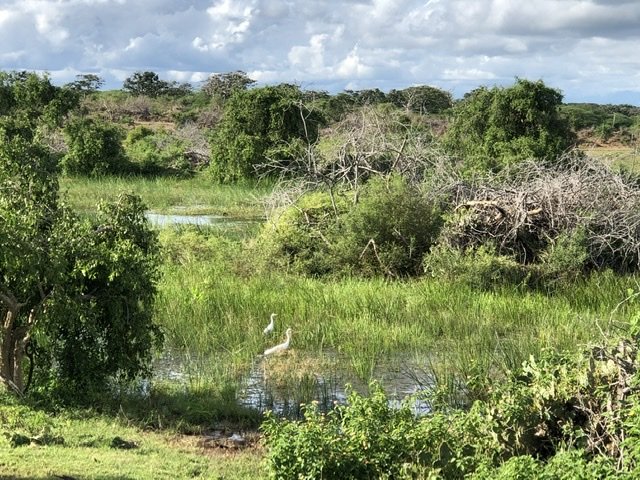
Incredibly the park was affected by the 2004 Tsunami, but fortunately due to the protection provided by the sand dunes the park received little damage. It’s one of the few parks in Sri Lanka open year-round which allows for travelers to get a wet season fix if they happen to be there during this time.
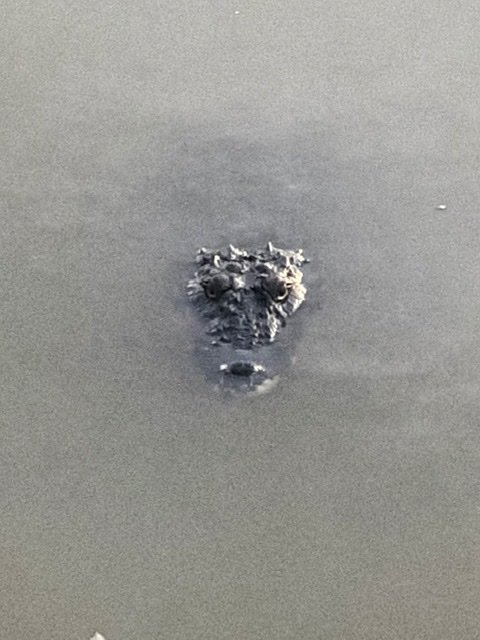
Estuarine (salt water) crocodiles were somewhat easy to spot, but only because we were six feet up off the ground riding in our Jeep. Spotting them walking along the shoreline would be a much more unnerving experience. Their heads looked so tiny until you saw the full length of them. Some of them are truly monsters! Apparently they are one of the largest crocodile species in the world and can grow to more than 5m in length.
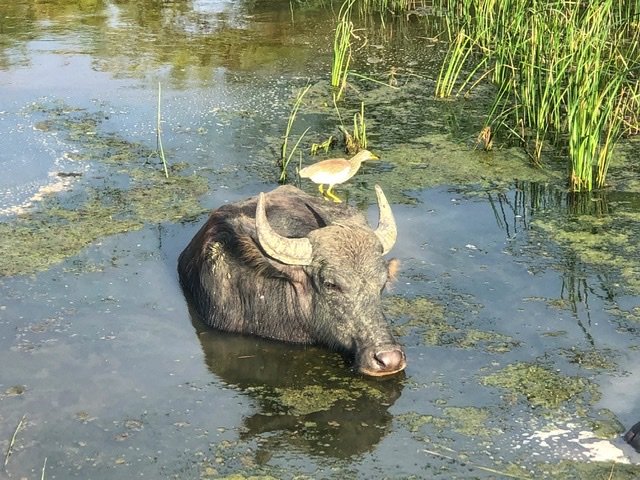
The wild water buffalo (or Asian buffalo) has been on the endangered animals list since 1986. They always seem to have lots of friends catching a ride or a free perch atop them!
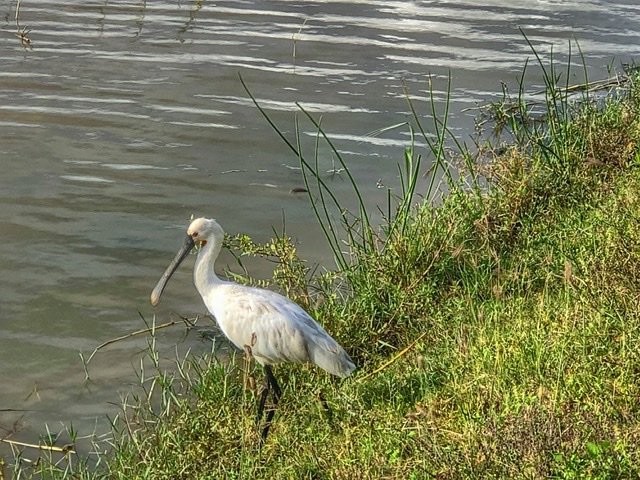
The elegant Eurasian Spoonbill can be found throughout Bundala. It typically has a yellow tip on its black beak.
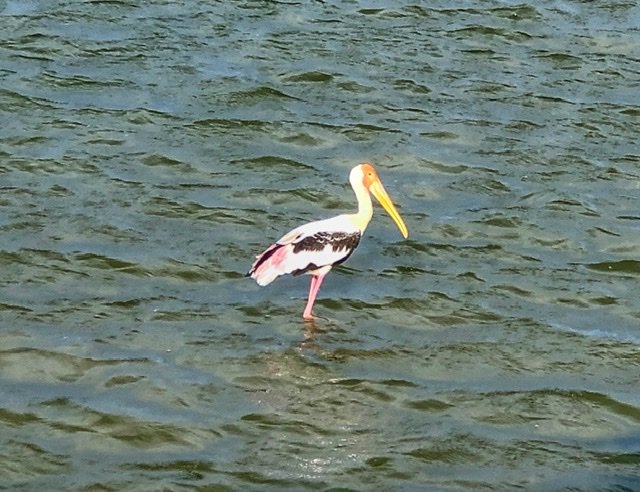
The Painted Stork gets its name from the distinctive pink tertial feathers.
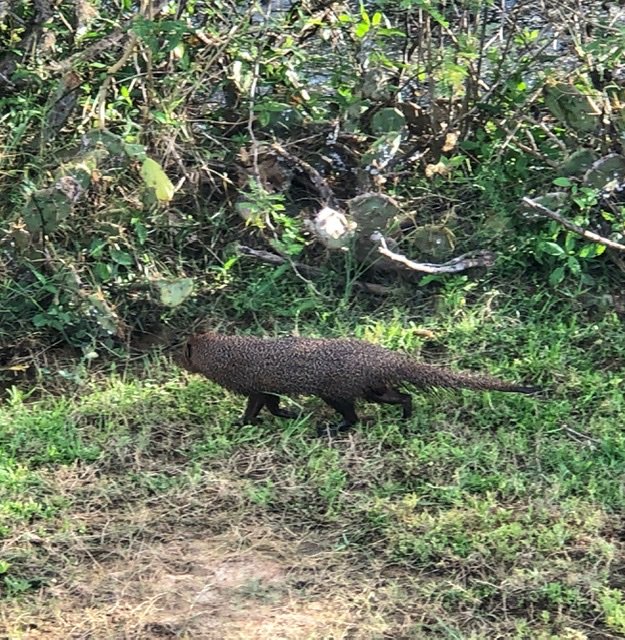
While mongeese (yep, that’s the plural) can be furry and cute, these little critters who dart all over Sri Lanka aren’t exactly docile. Like the Jungle Book taught us, they are actually lightening quick and fearless with venomous snake-killing abilities, cat-like, and full of energy.
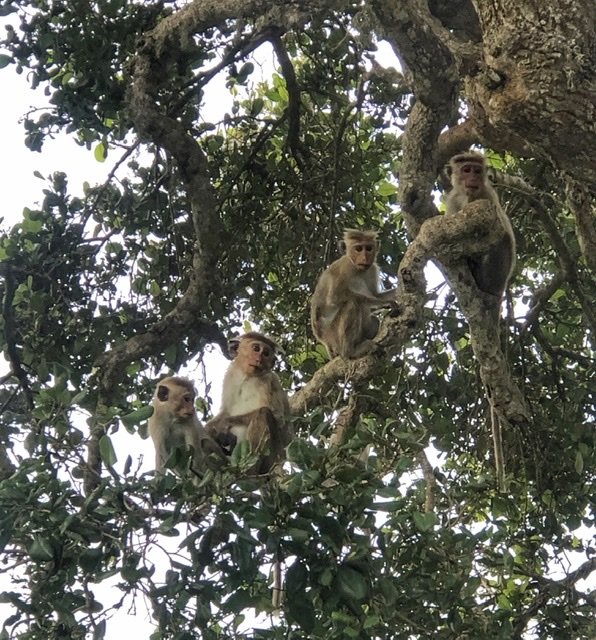
Complete with their Boris Johnsonesqe hair, these macaques enjoy some downtime in the tree tops.
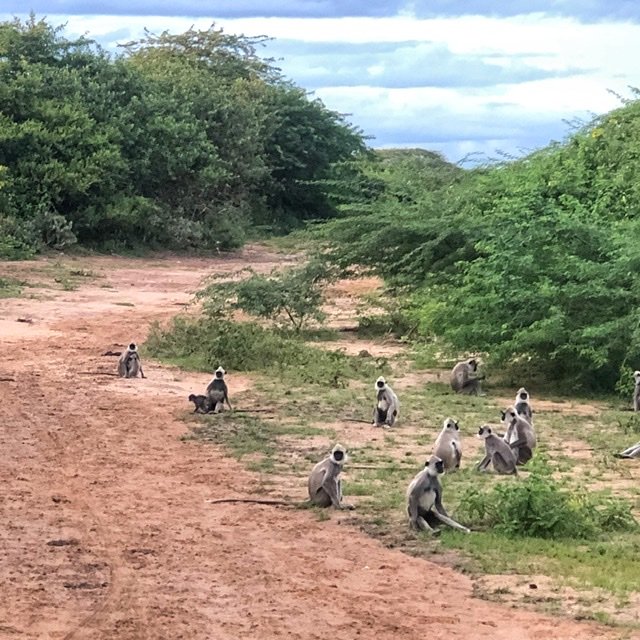
The bouncy and speedy Indian gray langur is actually an intimidatingly large monkey when you get up close to them. Part of that size is just their tail which can grow up from 69 cm to 102 cm (2-3ft.) and are always longer than their bodies.
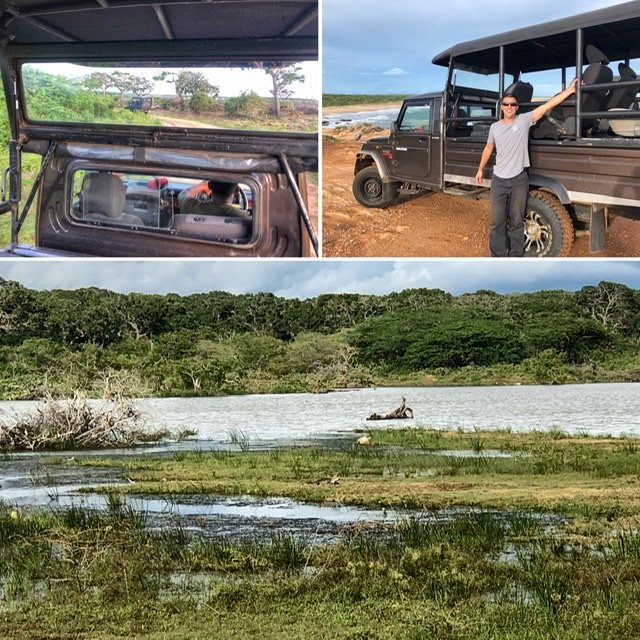
Our safari 4×4 through Bundala was VERY bumpy! Our guide, admitted he’d only been to this park a couple of times before us only after we were in the park. ?

Ranji Homestay, Tangalle
Now that we’ve experienced it, we can say nothing beats Christmas in the tropics! This Christmas we were extra fortunate to have spent our holidays at Ranji’s Homestay ($18/night, booking.com) on the southern coast of Sri Lanka near Tangalle. Ranji, who is a fisherman by trade, who also runs his homestay (guesthouse) along with his cook extraordinaire wife and daughter. They welcomed us with open arms and hearts from the moment we arrived providing us with the best Sri Lakan meals we have eaten. As we quickly learned staying in a fisherman’s house has some seriously delicious perks, like getting to eat the absolute freshest local fish you could imagine. What we didn’t expect though was the culinary powerhouse that Ranji had married, Meleka. Everything we put in our mouths was crazy good, gourmet, and delicious… beginning with enormous breakfast spreads and afternoon juice smoothies or incredible dinners. Ranji and family didn’t just give us over-the-top hospitality with their food Ranji also generously took us out to sea on his fishing catamaran one morning, gave us fresh fun fruits from their yard, and above all didn’t shy away from joyfully sharing the Christmas cheer and our traditions with us even though they are Buddhists. Truly such a welcoming and good hearted family. Oh, and by the way, an idyllic and mostly deserted golden sand beach was a quick hop across the road. What a paradise!!
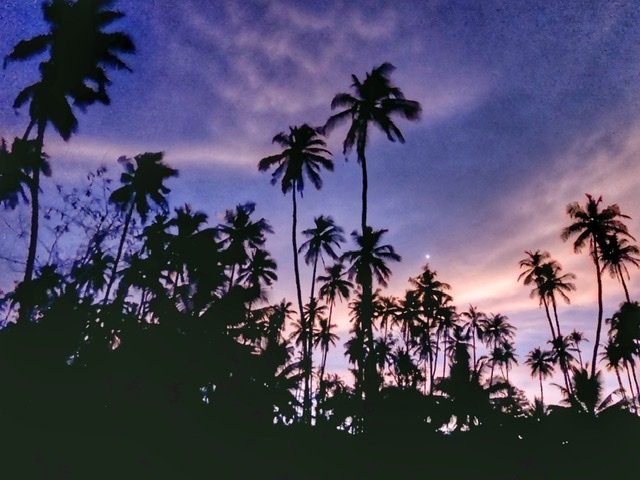
Catching a beautiful sunset across the street from our homestay.
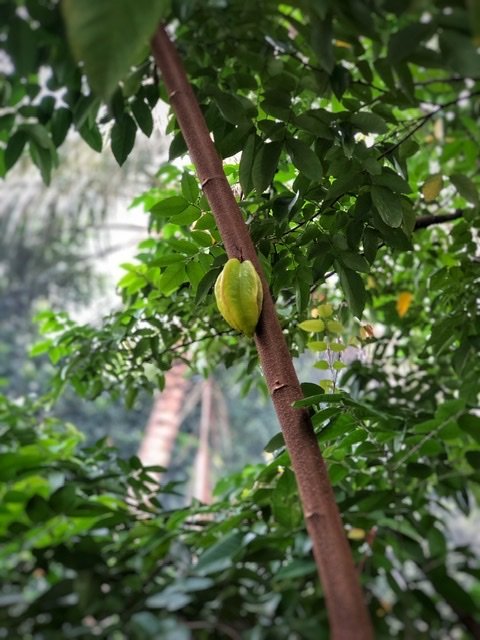
Mandy stood by with a basket to collect as Ranji climbed around this star fruit tree plucking the fruits off for us to gorge on. We had eaten star fruits a couple times, but never had the experience of checking them for ripeness or of being able to pluck them off the tree. Star fruits have a waxy, slightly wrinkly skin, and the entire fruit can be consumed easiest when sliced.
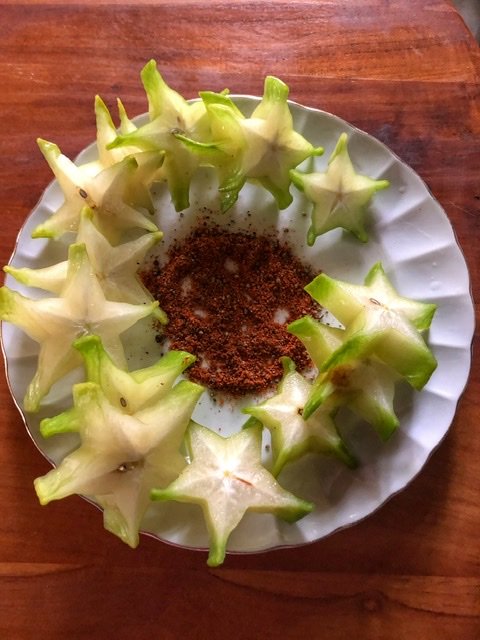
When cut, the five-pointed fruit resembles stars. The taste is apple-like with some sour, sweet and a little crunch. Thanks to Ranji’s wife, Meleka, we learned it is extra tasty served with a seasoning of chili powder, salt and pepper.
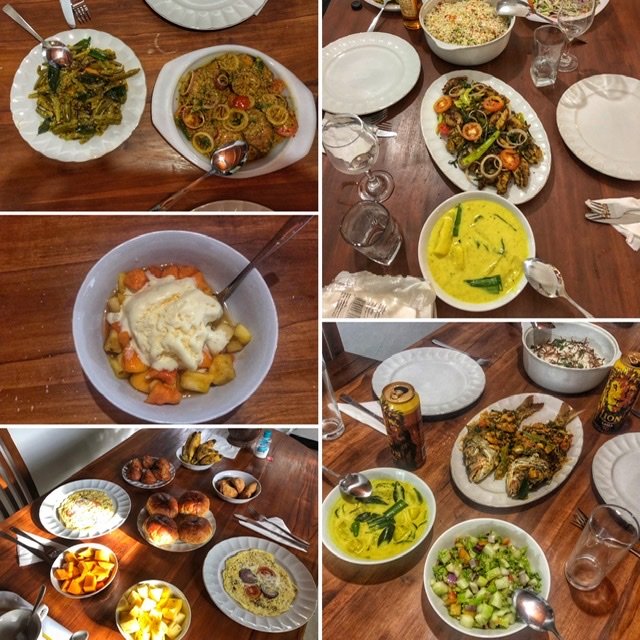
An assortment of the truly unbelievable meals produced by Meleka. The breakfasts were so enormous that they usually filled our bellies well past lunch and were remarkably included in the price of the stay. As for the dinners, well, they were never short of gourmet OMG(!) quality and always involved the bounty of the sea thanks to Ranji. Dinners included snapper, shrimp, a fish Ranji mysteriously called “sea fish” which was a firm whitefish meaty like tuna, and a fish Ranji referred to as “chicken fish” which surprisingly was exactly as the name implied. Every meal was accompanied with dessert which was either fresh local curd baked in a clay pot drizzled with local raw honey, a fruit salad, or fruit topped ice cream. When we inquired with Ranji, what we should pay for the dinners, we were told to “only pay what we thought each dinner was worth.” Well, we gave him a sizable tip at the end, but for the service and food we received, it was undoubtedly worth every rupee!
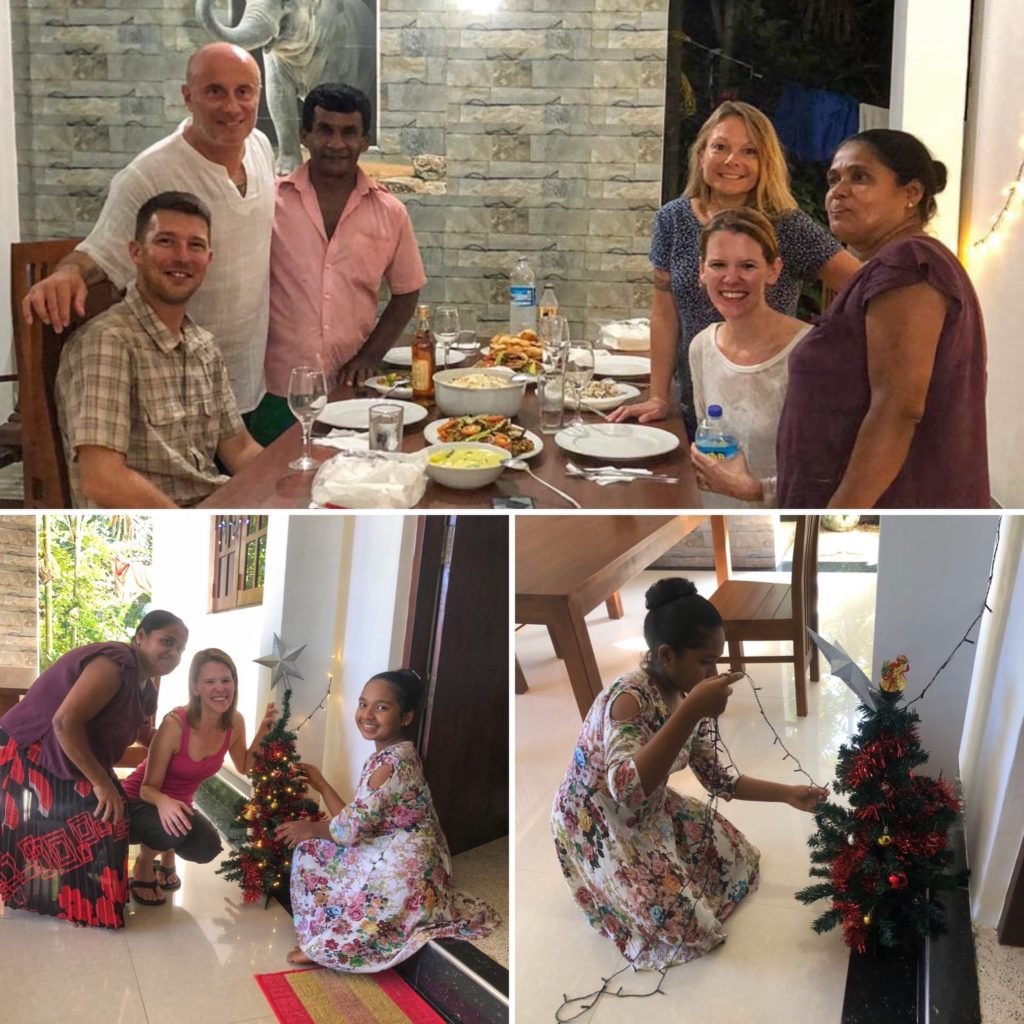
On Christmas, we had yet another feast and in addition to our hosts, we were joined by a French couple also staying at the guesthouse. Ranji had incredibly gone out and bought a small Xmas tree to help us celebrate. Decorating the Christmas tree was an amusing experience. Ranji’s 16-year-old daughter, being Buddhist like the rest of the family, had never done this before. When Mandy came out of the room on Christmas Eve, she witnessed her with the tree covered in garland, ornaments, and a massive lop-sided silver star which was rigged to stay positioned in the tree using the inside of an ink pen. She eagerly held up a string of lights, clearly not realizing the lights are always the first thing on the tree. Mandy helped her perfect the little tree despite the unconventional order, and together they added a scarf as a mock tree skirt.
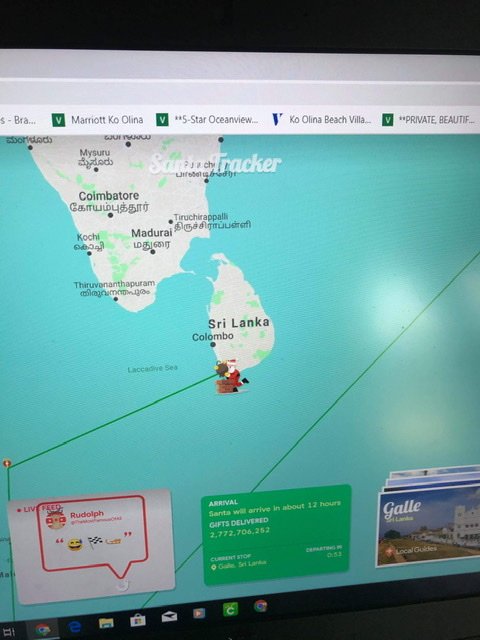
A friend from home sent us the Santa Tracker as he flew over the island!
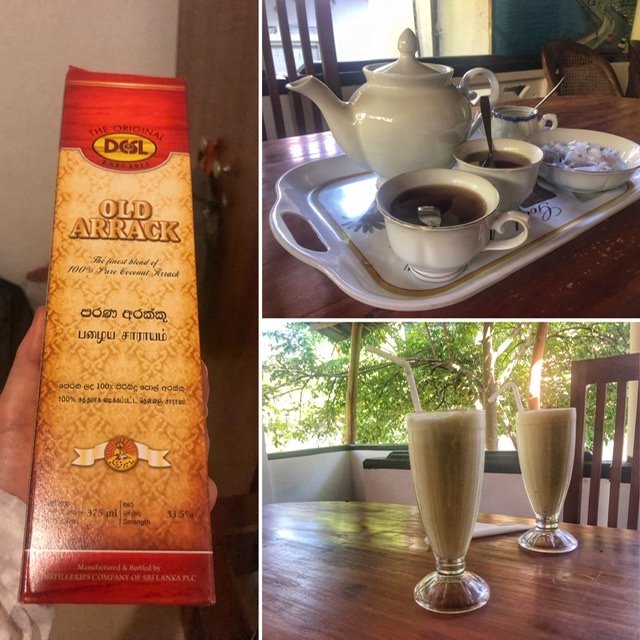
Every afternoon we also received fresh fruit juices or tea from wonderful Melaka. And Ranji even bought us a bottle of Arrack to share, a spirit made from the fermented sap of coconut flowers or sugarcane. Fortunately it’s better than the Balkan raki we’d had although still nicest to dilute with club soda!

The next day Ranji took us out on his “catamaran” which is a term we use loosely for the wooden fishing boat hardly wide enough for a cheek of your bum. This traditional Sri Lankan boat was held upright by two wooden curved beams connected to another wooden ballast. We were absolutely amazed that Ranji braves the Indian Ocean in this 20 year old (outwardly unstable) wooden and fiberglass boat to fish and provide for his family every single morning starting at 3 am. Fortunately it did, at least, have a small motor.
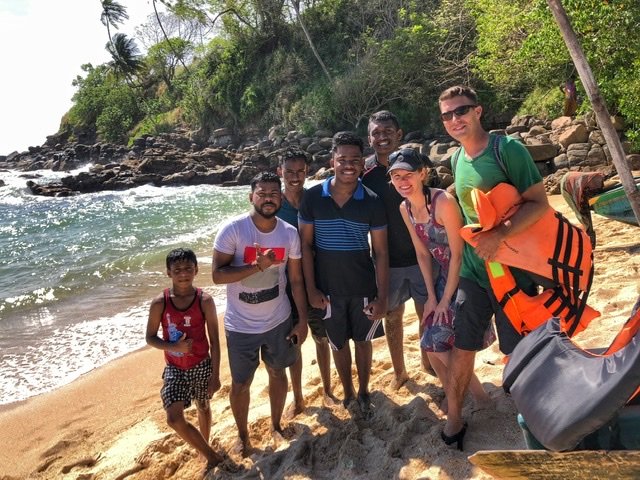
What is even more amazing is that this fifty-something year old man single handedly, or sometimes with one other fisherman, moves this several hundred pound/kilo boat up and from the beach. It took us and a team full of locals (pictured) to get the boat up the steep incline of the beach after our tour.

Mandy shows off how to lounge in a traditional Sri Lankan chair. The arms extend out to have a place for your feet. It kind of reminded her of another kind of chair ? She was much more comfortable in this one, however.
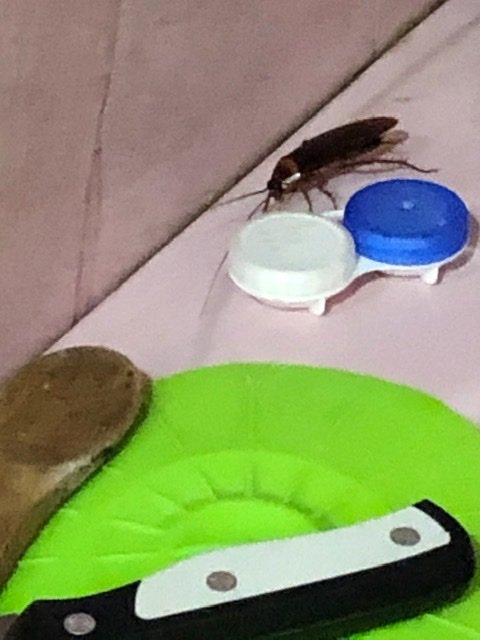
Life in the Tropics! Another friend we made at Tangalle. Believe it or not, he came out every night in the bathroom at the exact same time. Naturally the first couple times he gave us a bit of a jolt, but soon we just got used to his presence. ?


The South Beaches
If you want powdery expansive beaches, endless swaying palm trees, and most importantly fewer crowds than some of the more popular resort areas further west, then head to Tangalle and Dikwella on the southern Sri Lankan coast. It is a little (mostly) undiscovered paradise. What’s more it’s VERY budget friendly!

The region is blanketed in possibilities for exploration of small fishing villages, phenomenal tide pools, surfing, and endless day trip possibilities. Or if you’d rather just chill out on the beach (as we habitually did) to find some guaranteed relaxation. Pictured above is the almost always(!) deserted beach in front of our homestay.
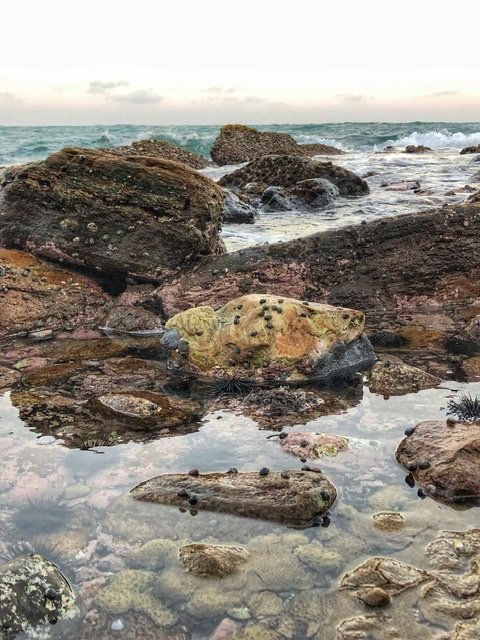
Goyambokka Beach
Checking out the tidal pools at the nearly deserted Goyambokka Beach. It has a very chill vibe with a few beachside restaurants, as well as multiple beach huts and accommodations so it’s super easy to spend your entire day here.

The tide pools, which are of course best timed with low tide, were absolutely chocked full of sea life.
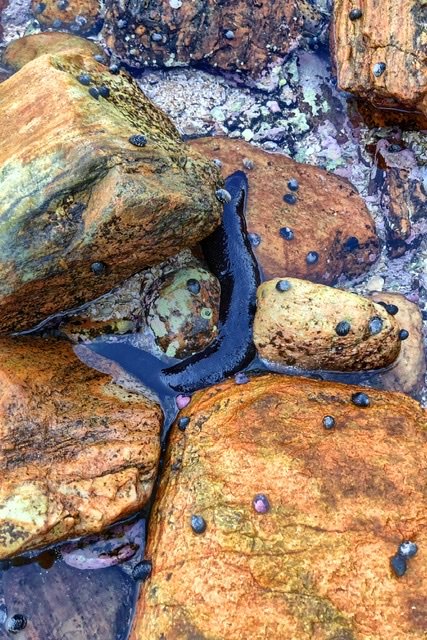
Sea cucumber! (Mandy’s first!) Although these brainless(!!) invertebrate creatures live worldwide, we haven’t crossed paths with too many. They are obviously named for their fat cucumber-like physique and can range from 2 cm to 1.8 meters (6 feet!) Depending on the species, sea cucumbers can be red, black, blue, green or brown in color. A few other bizarre facts:
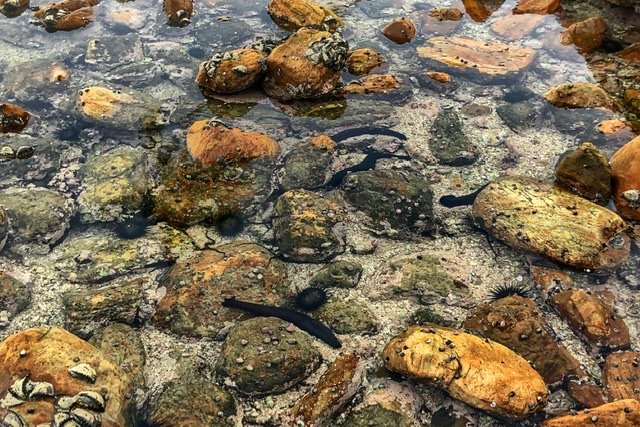
- Sea cucumbers breathe via their anus.
- When faced with danger, they are able to expel internal organs along with toxic substance toward the predators. All missing organs will be regenerated in the next 1.5 to 5 weeks.
- They can produce offspring without a partner
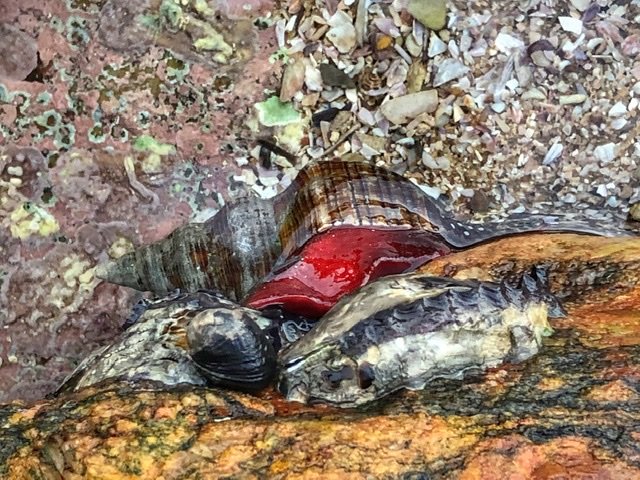
This vibrant red sea snail clings to the side of a rock making friends atop oysters and mussels.
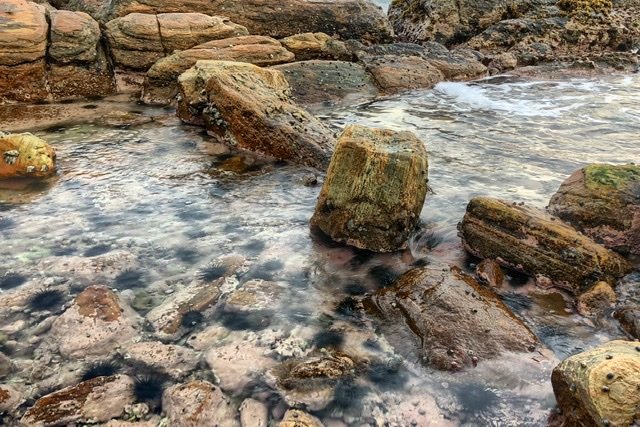
Watch your step here! Black sea urchins, also known as sea hedgehogs, littered the ocean floor in the tidal pools. The average sea urchin is 3-10 cm in diameter.
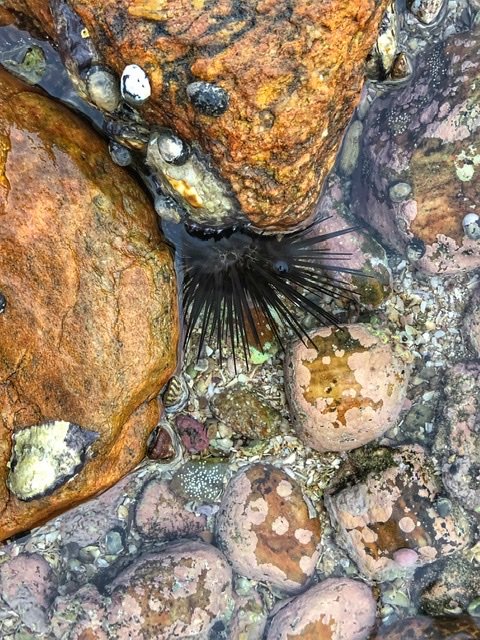
Up close, you can see they have long and pointy spines all over their body. Most of them are hard and rigid. Some species have spines that are soft and poisonous. Regardless it seems best to avoid, after Greg stepped on one in Zanzibar.
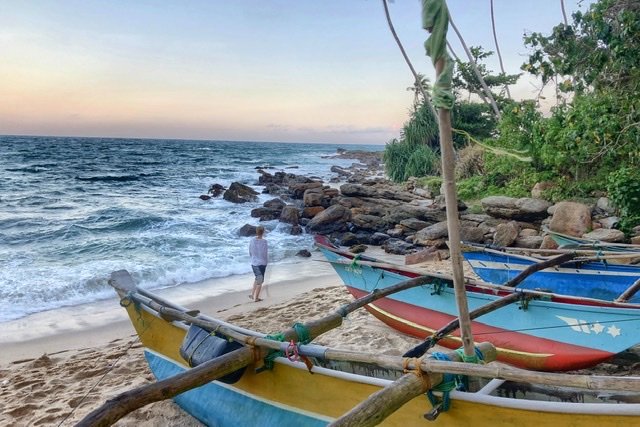
Fishing is still a daily part of life in this village.

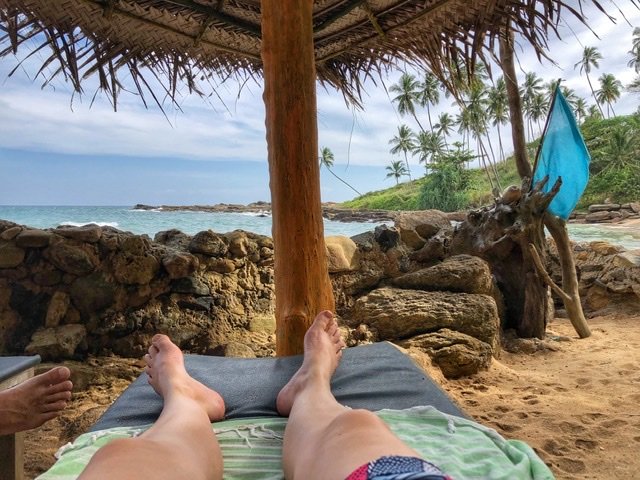
Three other nearby beaches. Top: Hiriketiya Beach, known for surfing. Usually much more crowded. Left: Goyambokka Beach. Right: a monk walks along the expansive Dikwella Beach.
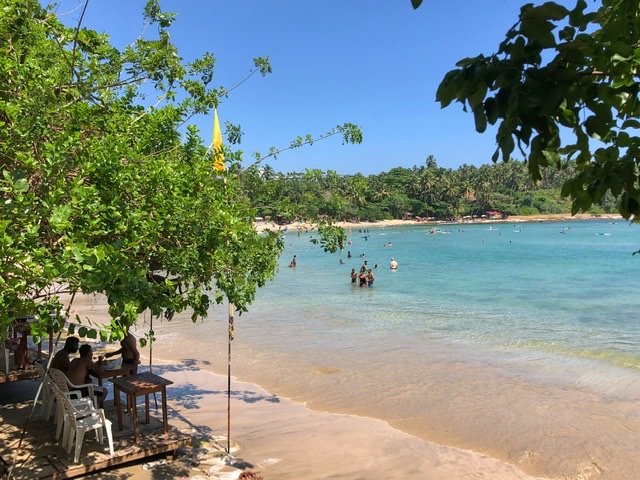
Hiriketiya Beach was quite crowded with families and people learning to surf. It featured lots of roti and snack stands throughout. Chairs were available for rent (about $2/day) or you could plop anywhere on the sand for free.

It’s mostly easy to walk from place to place, or take local buses, but tuk tuks are widely available.
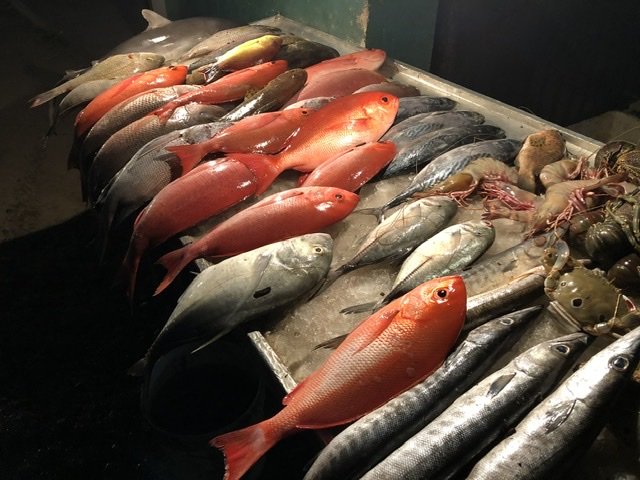
Mirissa: The Whale Watching Capital
We spent a night in Mirissa just so that we could have a chance to encounter the big guys—blue whales, which we’d never seen before. We probably wouldn’t stay here otherwise as its quite touristy and busy, but it just was fine for a night. Plus, they had amazing seafood selections.

And sunsets.
We actually thought this island couldn’t get anymore magical until we took the whale watching tour with Whale Watching Club. They are a very reputable company which are environmentally aware and do not chase whales like some of the others. Also, they do everything they can to ensure that you get to observe the magic of these beasts, including offering you the opportunity to go again if you don’t see one the first day.
Fortunately we did lock eyes with this endangered species. They range up to 30 meters in length and are approximately 30 tons or more. Apparently their tongues alone can weight as much as an elephant. Seeing one in person absolutely takes your breath away.

It was well worth the splurge of $40/ticket, which included breakfast, a mid-morning snack, and even a motion sickness people, which came in very handy during the choppy waters! One poor guy was ralphing nearly the entire time. He didn’t look so happy.
Galle—a ‘Lil Dutch Delight
On the southern Sri Lankan coast you’ll find an anomaly….what seems to be a little Dutch delight in the UNESCO world heritage city of Galle. It’s easy to be seduced by this historic city while ambling through its streets…admiring grand mansions, elegant mosques, Dutch colonial buildings, cafes and quirky boutiques.
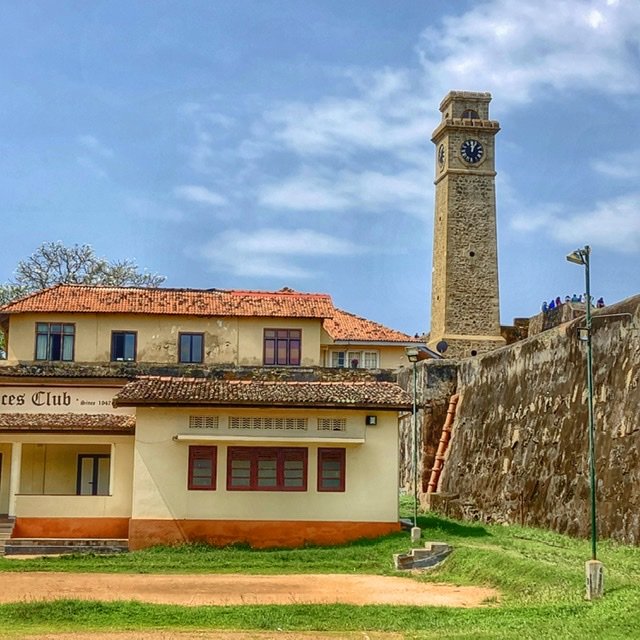
The Galle Fort is surrounded by an intact three-sided walled fort built by the Portuguese in the late 1500’s. Beginning in 1663, the Galle Fort was enhanced by the Dutch and the rest of the city sprung to life. The Brits then added the candle to the elegant cake in the late 1800’s. Clearly, Galle, like Colombo, has changed hands a few times.
However, Galle’s history goes back far prior to 2nd Century when it was said to have been one of the biggest trading ports at that time with connections to Greece, Arabia and China. The fort took a beating during the 2004 Boxing Day tsunami but has since been restored.
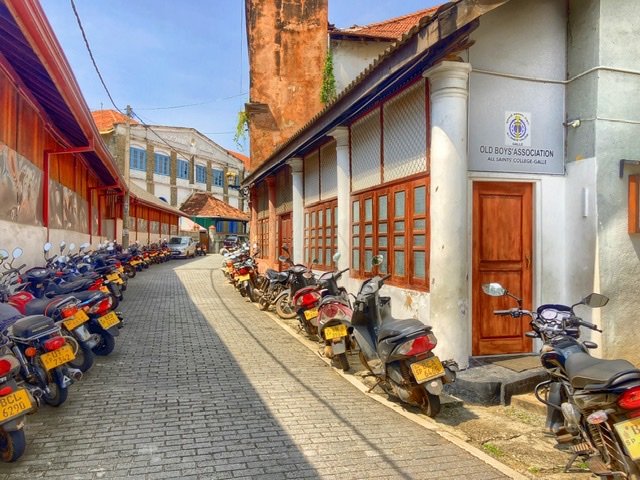
Streets of Galle. Clearly scooters are the way to travel around here!
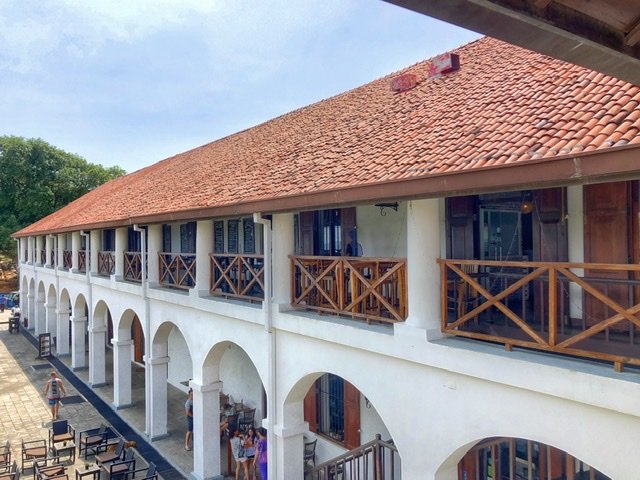
The Dutch Hospital was developed during the Dutch period and today is a shopping and dining precinct. It has also been a hospital (obviously), town hall and government offices.
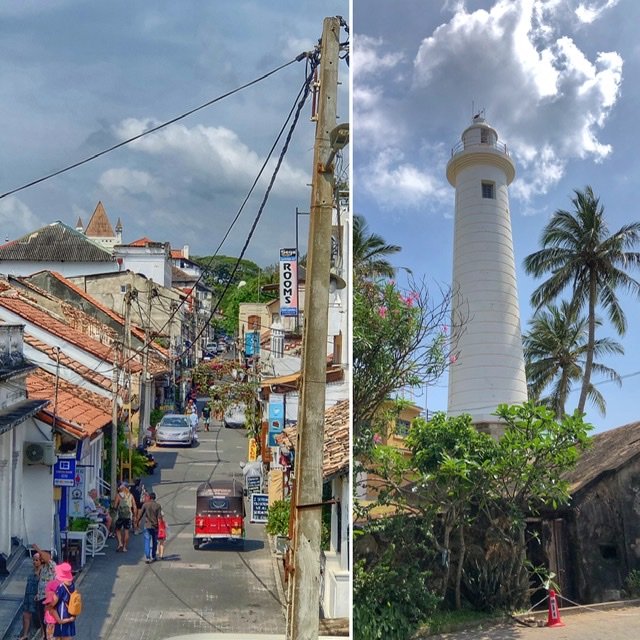
A street scene in Galle, alongside the lighthouse. This lighthouse was the oldest of its kind in Sri Lanka dating from 1848. It burned down in 1934 and was rebuilt in its current site.
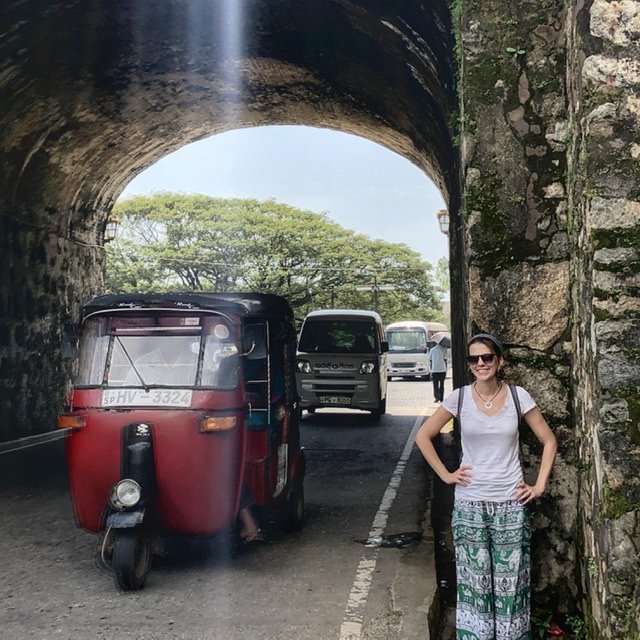
Mandy pauses in some delicious shade at one of the two main gates to enter Galle. (Yes, did we mention, it was hot?!)
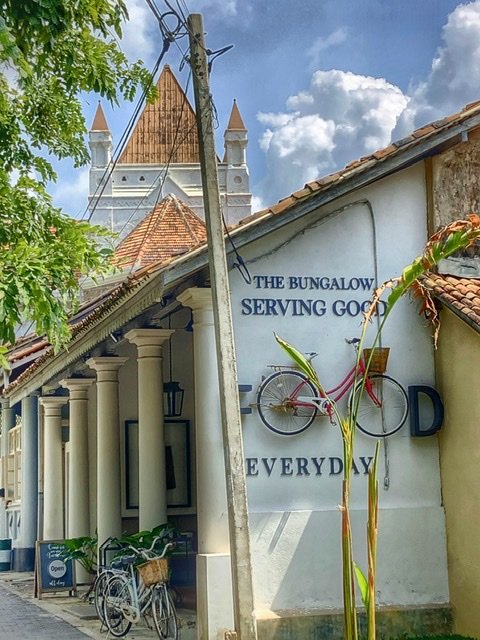
A bicycle cafe. The All Saint’s Church peeks its head behind.

- White signifies peace, and Sri Sudharmalaya Buddhist Temple testifies just that. It is surrounded by walled gardens making it a hard find. This shrine holds a lot of religious meaning amongst believers, and they flock this place during festivals.
- The Meera Jumma Mosque logically faces the angle of Mecca. It’s an another pure white and peace blanketed structure which demands an alluring visit when walking around the Galle Fort lanes.
- Another street scene
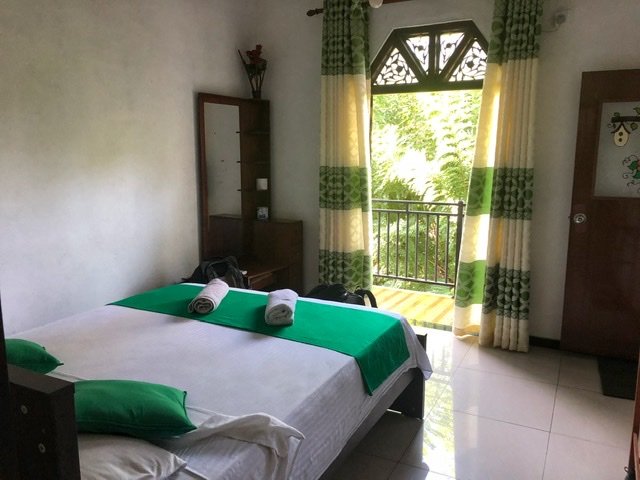
Our room in Galle at Homestay 24/1…another amazing find on the hospitality scale. The hosts were a lovely family who served up another hearty Sri Lankan breakfast included in the price. ($15/night) Bonus: he was a real chef!! A highlight was the terrace where we were able to watch monkeys right from the window over our morning tea.

Catching the sunset, and having some playtime, at the beach near our homestay.

One of the many reasons we regretted departing Sri Lanka…Elephant House Ginger Beer. For the record, there is no actual beer involved but instead the most delightful gingery soda we’ve ever had. Unlike most ginger sodas, it’s made from 100% ginger extract, which makes it an excellent digestive, and has been sourced from Hatharaliyadda, Sri Lanka since 1896. It is exported to many European countries, New Zealand, Australia and the Middle East. However, yes it still has sugar, so glad we made our escape from the temptation!
From Galle, we made our way back up to Negombo where we stayed a night near the beach before catching our plane. It was a really nice area where we probably would have stayed a little longer if we could have.
Sri Lanka Wrap-Up
Time Spent: 23 days
Money Spent: $937.71 or $40.77/day
Budget Travel Meter*: $
The upsides of Sri Lanka
- It truly has everything and for this reason rolls in at one of our favorite countries in 2019.
- Mountainous/hilly luscious green terrain with waterfalls perfect for hiking
- Stunning beaches with swaying idyllic palm trees
- Unique experiences in tea country
- Incredible wildlife, including the chance to see blue whales
- Wonderful/hospitable people
- Organization and efficiency
- Dynamic cuisine that offers the perfect amount of spice, including the best breakfasts anywhere
- Very budget friendly. Easy to average ~$35/day for a couple
- You can experience a multitude of climates from quite rainy and chilly to hot and humid
- More delightful produce than we could possibly dream of
- Easy and efficient transportation. Even the local buses!
- Fast and readily available Wifi
- Not too crowded, but this will change again. Still there are lots of ways to get off the beaten path here.
The downsides of Sri Lanka
- You only get a 30-day tourist visa upon arrival (the fee was waived for us, but usually costs $40/person)
- Getting a reserved 1st or 2nd class train ticket can be a process and involves waiting in lines
- That’s it…clearly there’s not a lot of negatives!
Would we go back? In a heartbeat
Budget Travel Meter* The Budget Meter gauges how hard it was for us to stick to our $50/day budget factored by our daily food consumption options.
- $ – Eating-out up to twice a day and ordering whatever the hell we want, with dessert!
- $$—Eating-out once a day in a restaurant of our choice
- $$$—Eating-out once a day, on cheap pizza or local street food meals, usually involving copious amounts of filling bread
- $$$$—Eating-in every meal, healthy/fresh & in-season produce options
- $$$$$—Eating powdered soup & potatoes for every meal.

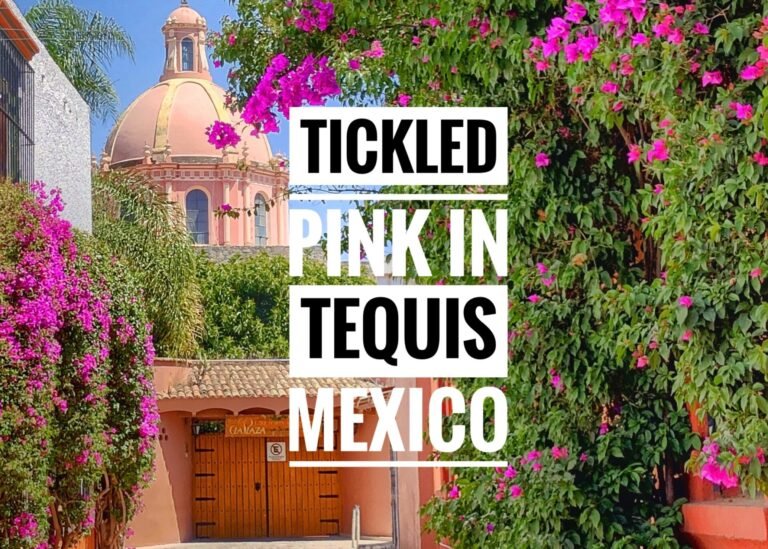
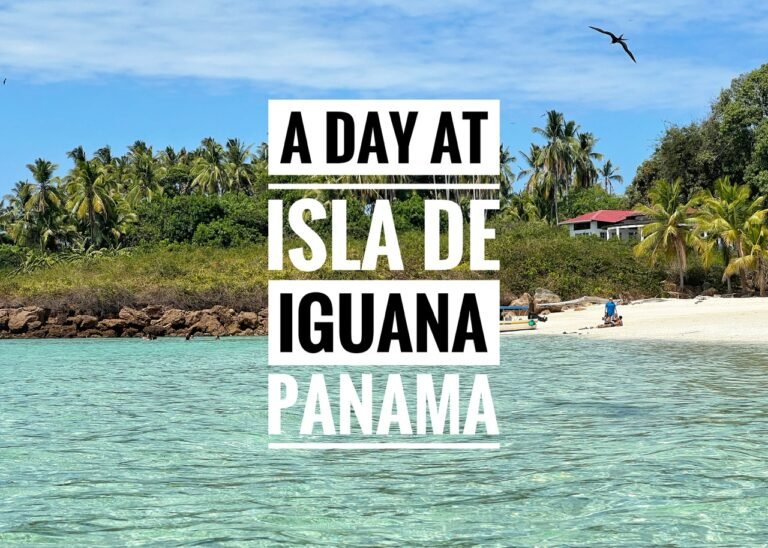
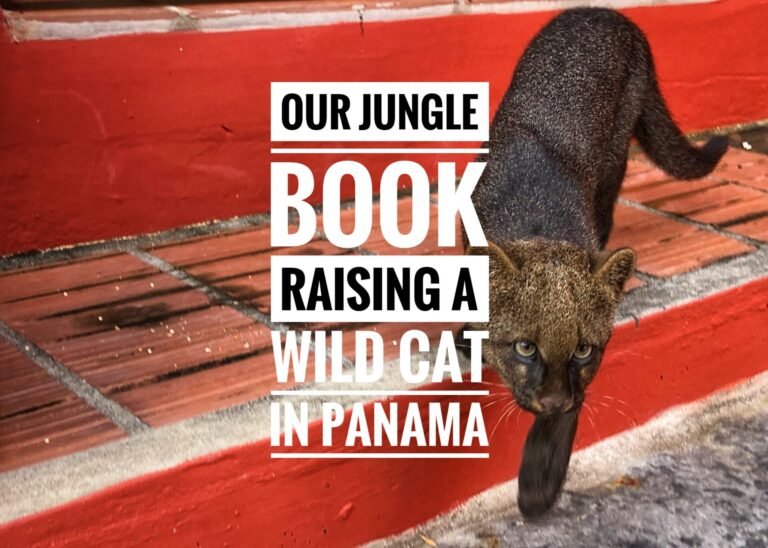
Amazing! An experience and elimination of all possible “Bucket List” items that anyone could have in one’s life. Makes us all wonder if you two will be heading back somewhere in the “America’s” to start the next journey of your lives. If and when you do . . Let Me know and I’ll do my best to visit! You are both missed back in Portland.
Todd (The Reluctant “MAC” Actor) Husband
Hey hey Mr. Husband! So good to see a comment from you. Thanks for continuing to follow our journey 🙂 To answer your question, we’re heading back to the States for a visit in November/December and starting 2021 with the next adventure! And of course, you better be there!